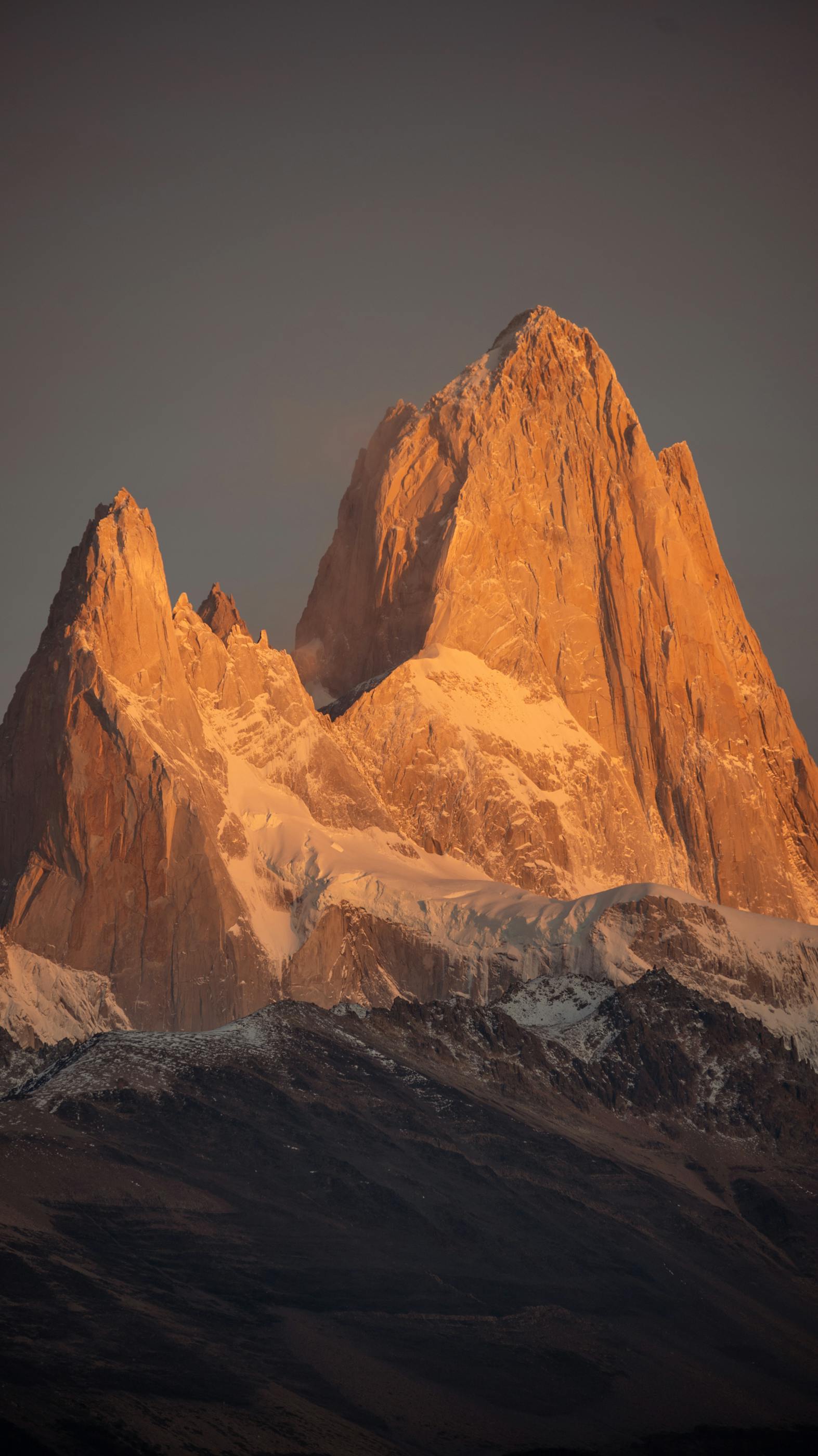5 Solo Days in Patagonia: 11 Lessons Learned
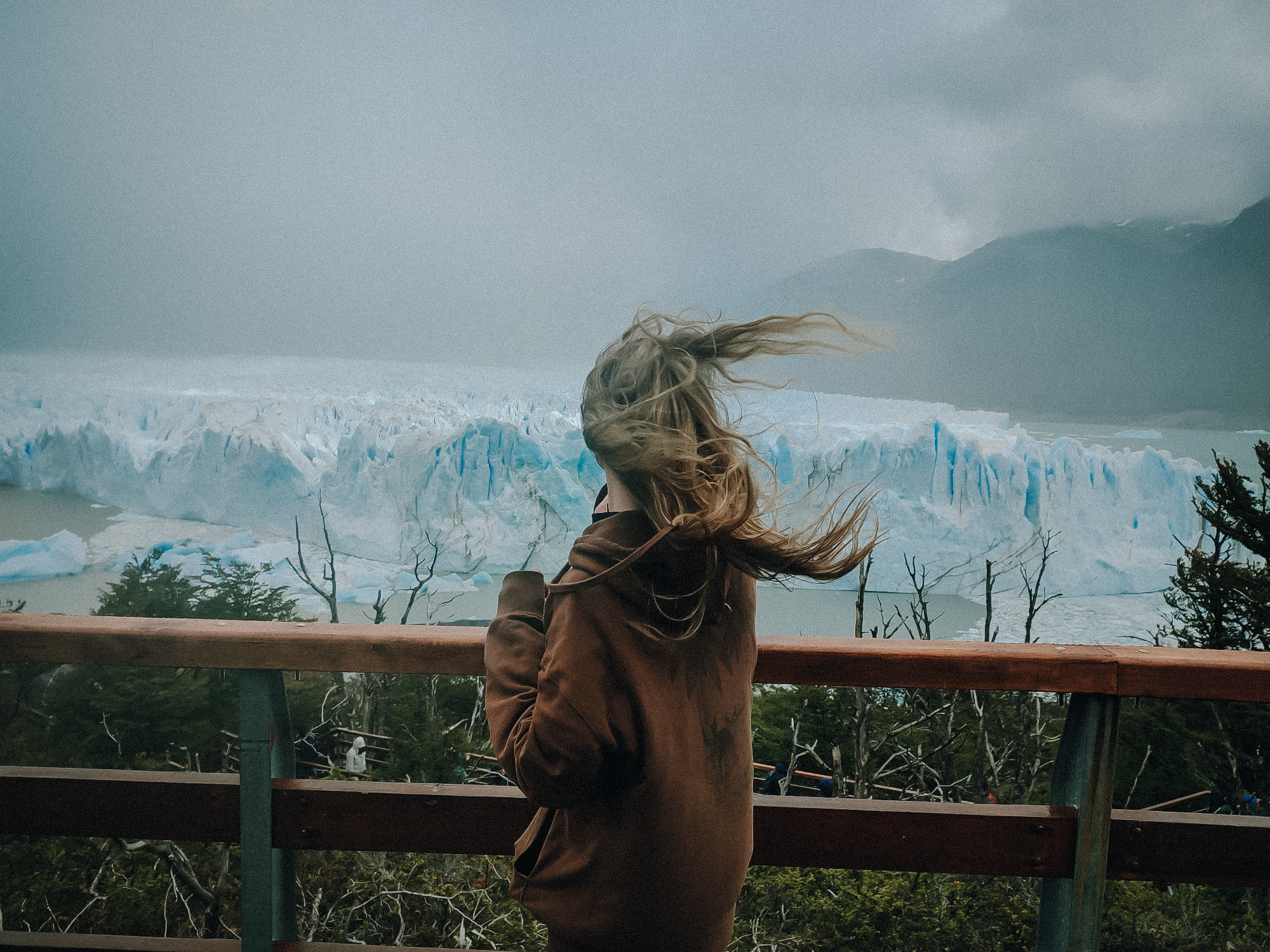
5 Solo Days in Patagonia: A Short Story of the 11 Lessons I learned
Towards the end of a month-long stay in Buenos Aires, I decided to book a last minute trip to Patagonia for five days. My boyfriend stayed behind, insisting the cost of the trip was a bit high for our tight budget. He was . . . absolutely right! However, it was a once and a lifetime solo trip, and I learned a lot.
Unfortunately, not only did I learn about glaciers, but I also learned exactly what not to do when traveling to Patagonia.
Below is my 5-day Patagonia itinerary, written not to give tips or hostel suggestions, but merely describe the lessons learned though a short story.
My Itinerary
11 Lessons from Patagonia
1. Silence is Important & Necessary
The journey to Calafate went smoothly. I woke up in the middle of the night, observing the still-packed night clubs as I rode an Uber to the airport. The flight was short and filled with anticipation. Upon arrival, I organized transportation from the Calafate airport to the hostel, feeling like a real adult.
After checking in, me and my tiny backpack ventured out into the town. I was in desperate need of coffee, and a blue cafe nestled on a dead end caught my eye. The inside was packed with other travelers, so I settled with an outdoor seat. I sipped a flat white by myself, my only company being a stray grey cat who jumped onto the table.
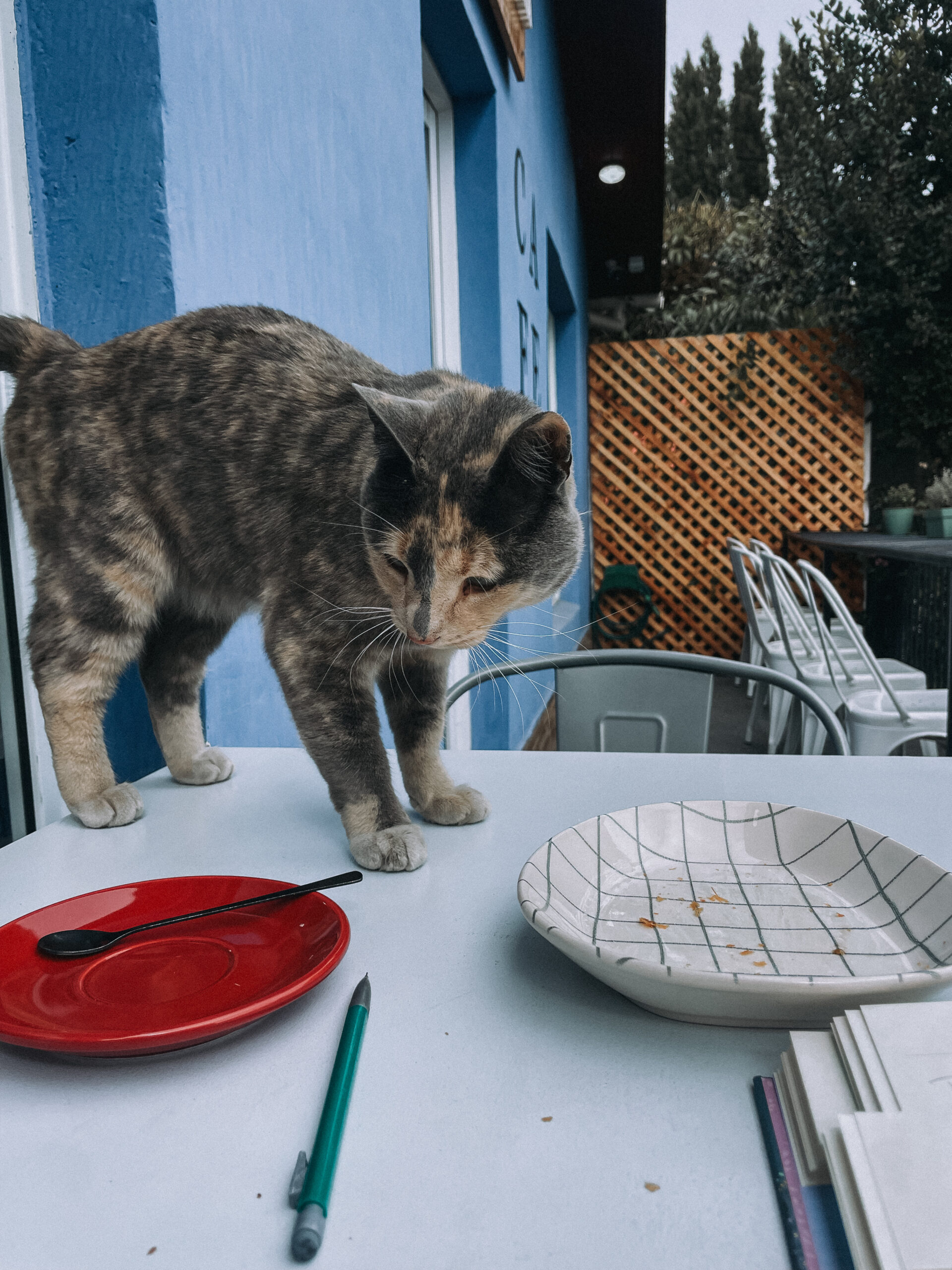
Sitting alone at a restaurant is always a different experience, though doing so in Calafate felt even stranger. The Wi-Fi is spotty and despite some locals and other hikers, the area feels desolate. In comparison to Buenos Aires, the silence felt eerie at first and took some getting used to.
After I finished my coffee, I continued to a nearby nature preserve called Laguna Nimez. The area consisted of a circular trail, looping around a central lagoon. After a month of constant honking, voices, and loud music, the lack of noise was deafening.
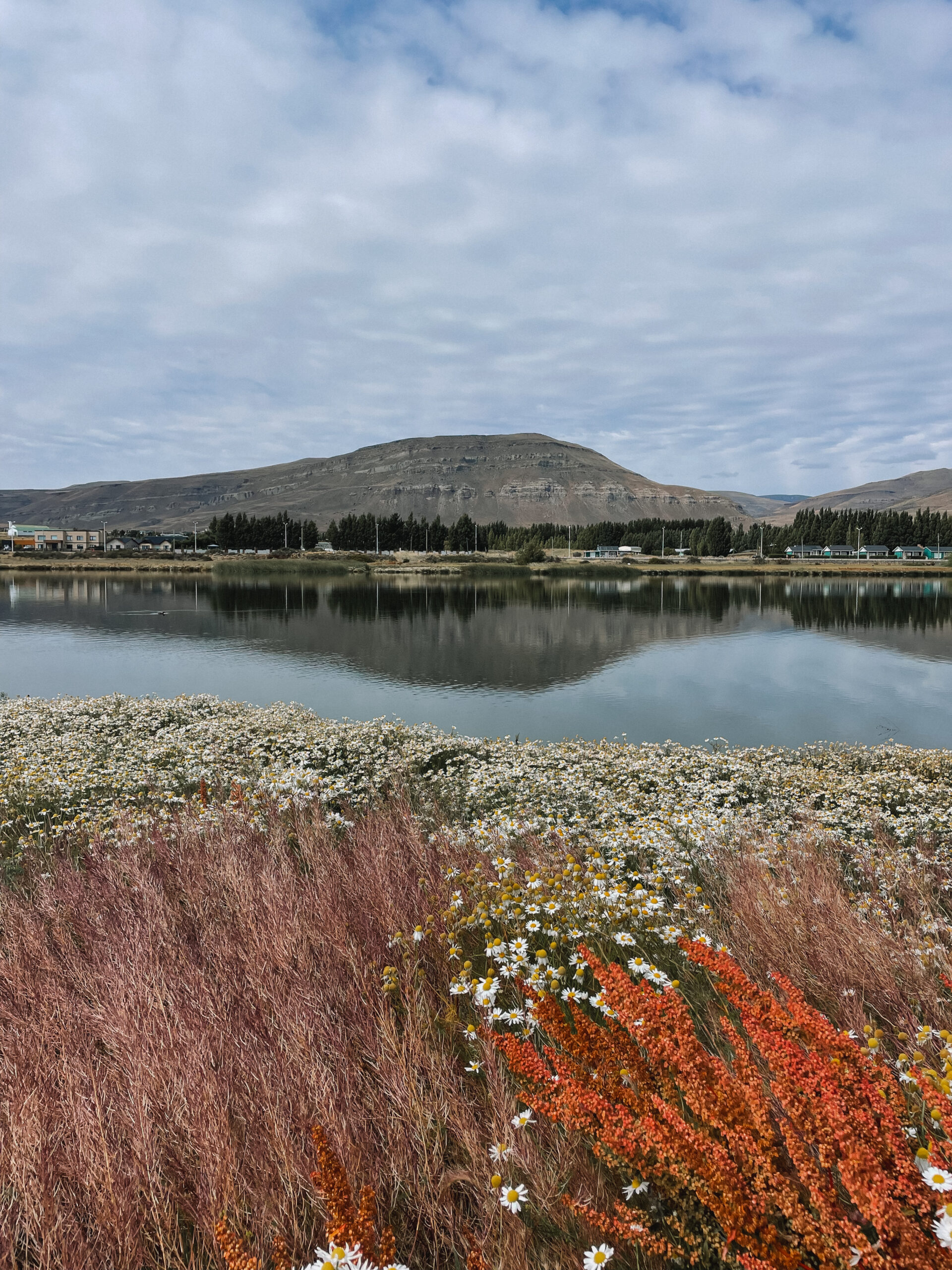
As I wandered through the wetlands, the only sounds around me were the nearby animals. Various bird species flew overhead, and others drifted in the water. The buzzing of bees surrounded the flowers and bushes along the path. I had no air pods or company . . . I merely walked with the presence of my own thoughts.
It was here that the silence no longer spooked me. I remembered how it felt to be surrounded only by nature, and I became increasingly excited for the remainder of the trip.
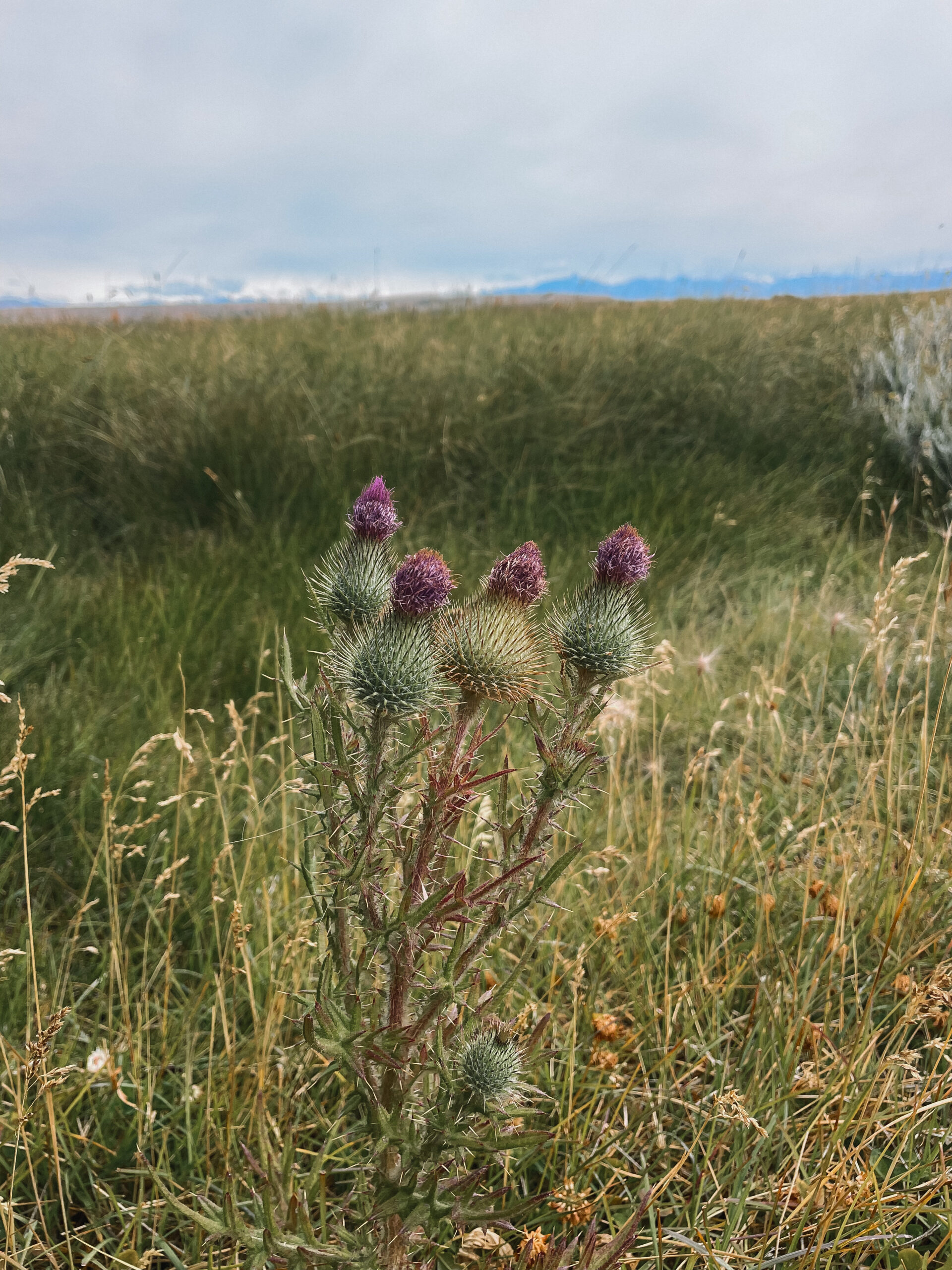
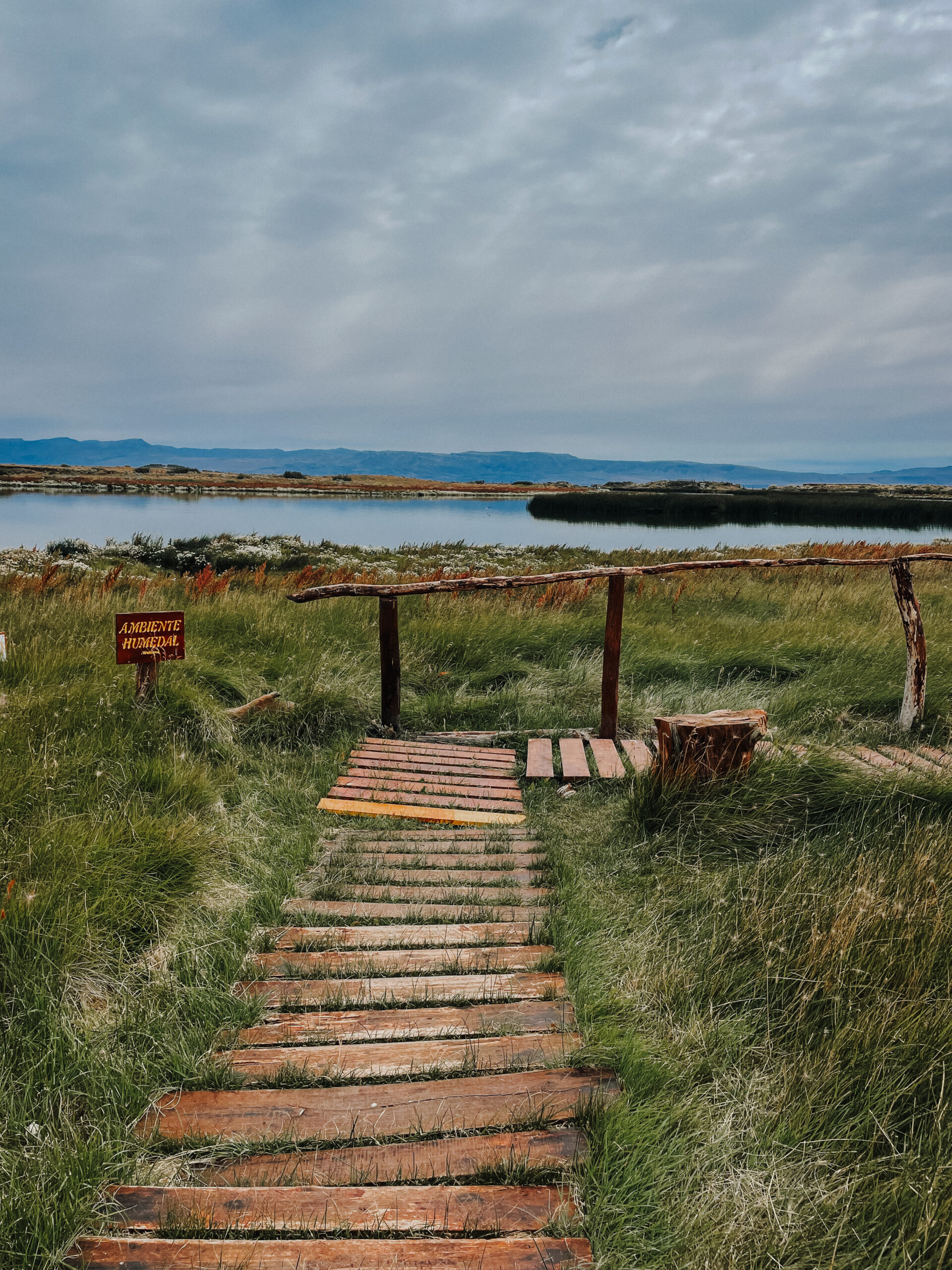
2. Hostels are Hippie Versions of Corporate Business-Expos
I spent the remainder of the afternoon wandering the “downtown” of Calafate. I browsed specialty artisan stores, specifically focused on the chocolate shops with free samples. Again, I ate dinner alone, treating myself to a Carbonara-filled squash.
As to spare me from the embarrassment of sitting alone, the host kindly sat me right in the center of the restaurant . . .
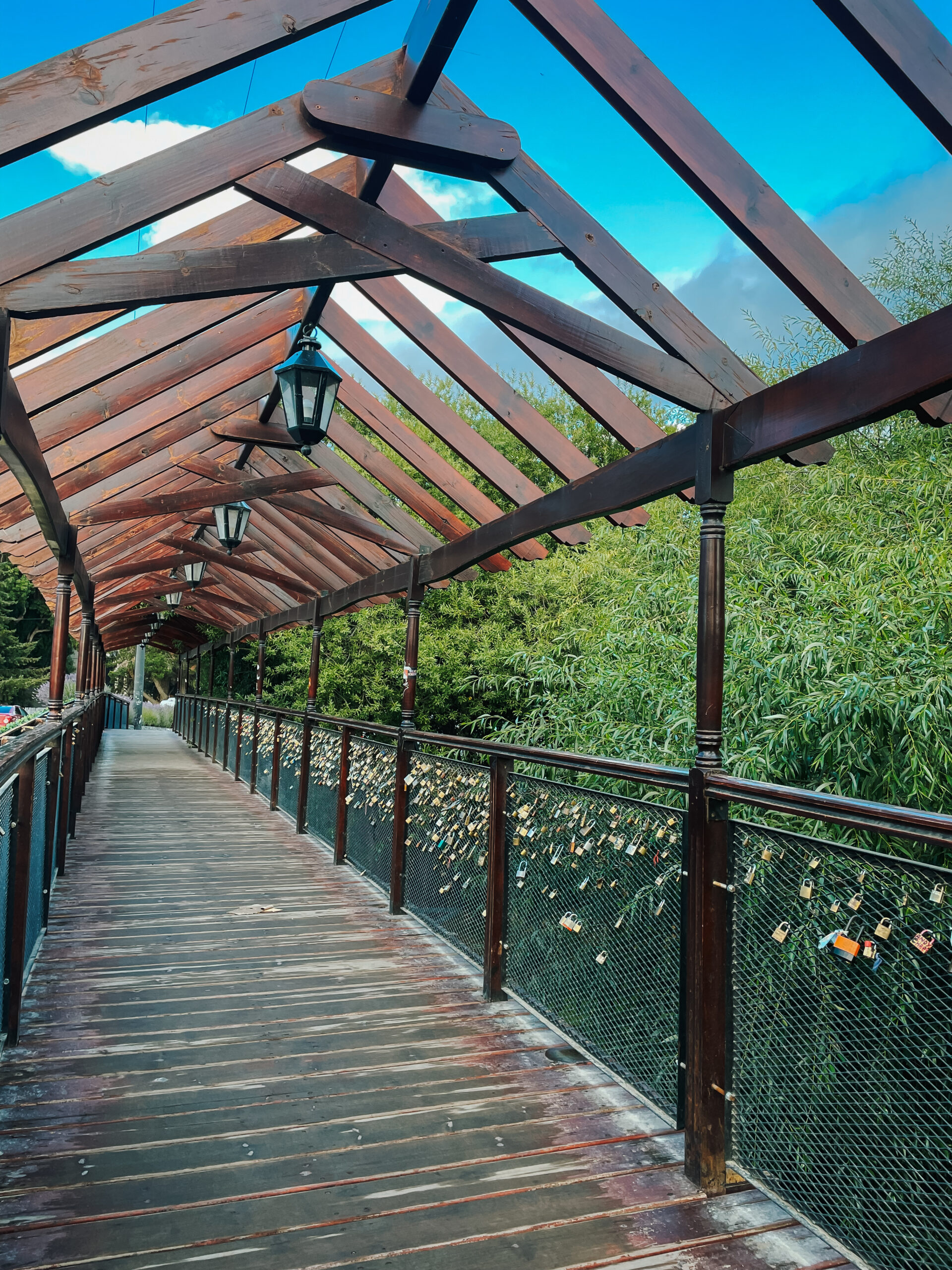
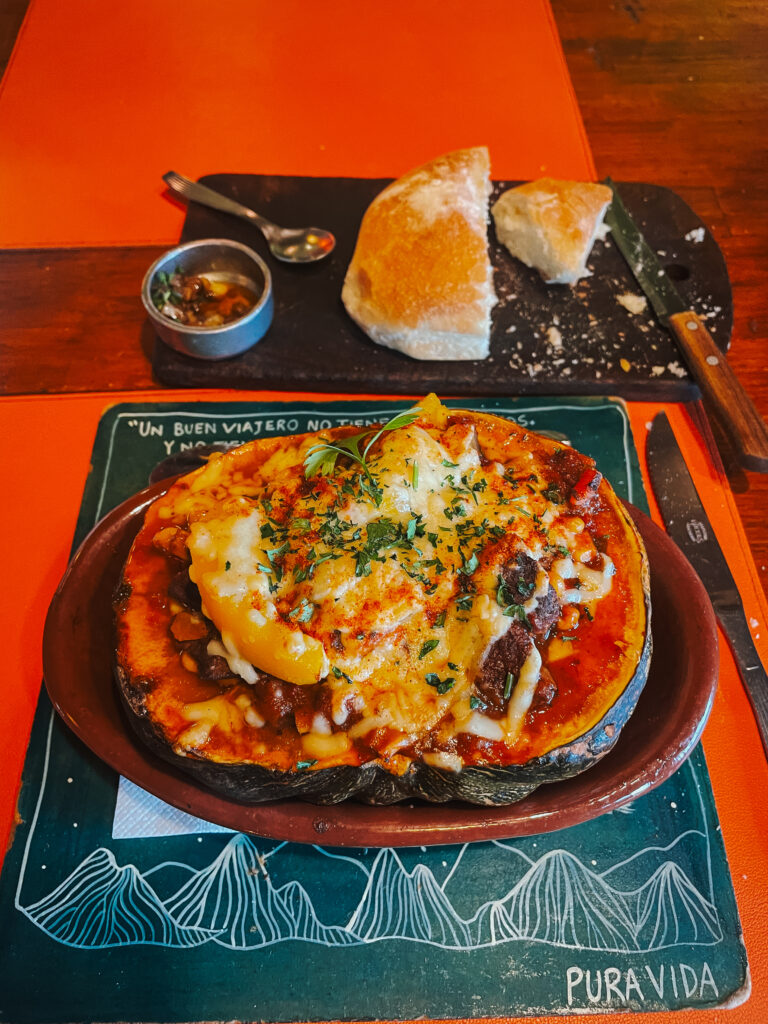
At the same time, I tried to find someone to split the cost of a taxi to the Perito Moreno glacier with me the following day. As someone who says “no” when people ask to see my art, recruiting taxi-buddies was very out of my comfort zone.
However, this trip was the first time I truly saw the benefits of hostels. You are surrounded by likeminded travelers, though each person comes with their own background and story. Everyone either has the answers to your questions or are in need of them too.
Meeting people in hostels is like networking at a business conference, except everyone is wearing hiking shoes and vaguely smells like sweat.
I finally met a girl named Rose, who knew of two other people that also wanted to visit the glacier the next day. We made plans to meet in the morning, and I quickly fell asleep in my small bunk bed. This shared space was co-ed, and the beds had no curtain to hide behind. It was truly the height of luxury.
In the morning, I woke up and immediately walked to meet up with Rose and the others. Along the way, I noticed there is an extreme number of stray dogs in Calafate. In fact, it seemed there were just as many stray dogs as locals. They were all friendly, laying at the foot of restaurant entryways or following tourists down the street. To my surprise, I noticed they were all (a little too) well fed for not having homes.
Later on, I attributed this issue to the amount of bread visitors fed them.
3. Mother Nature is Powerful
Once the taxi arrived, we drove about an hour and a half to Perito Moreno glacier. I learned where everyone was from, the places they’d traveled, and their future plans. However, we all stopped talking when the glacier became visible in the distance. Water filled the valley, then abruptly stopped at a huge wall of white nothingness. From afar, it merely looked like a mountain of snow.
Once we actually entered the park, we wandered the wooden paths and stopped at various viewpoints. The air was frigid, especially when rain started to fall. Any other time, I would have immediately retreated inside, though the wondrous glacier in front of us held my attention. Even up close, it was difficult to comprehend how large the mass of ice was.
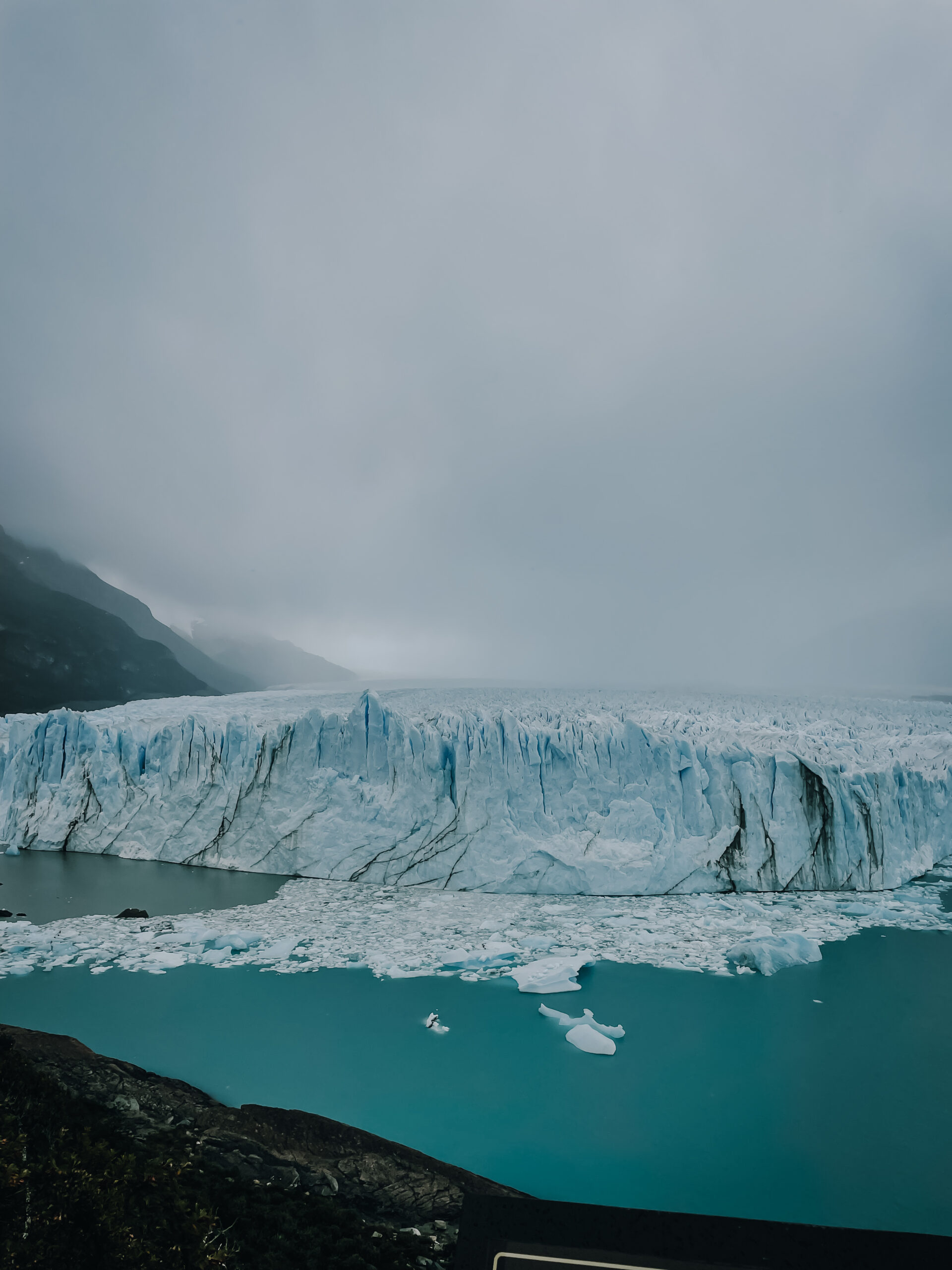
Thousands of peaks, points, and crevices filled the top of the glacier. Some spots were a blinding white, while others appeared blue. Streaks of black flew down the facade like lightning bolts. I later read these were made of rock debris and other sediments, clinging to the ice after being blown onto the glacier’s surface in the wind.
Occasionally, chunks of ice would dramatically fall into the water below, causing sounds of a splash to echo through the air. Water crept out from underneath the glacier too, gravity forcing it into constant motion right before our eyes.
Eventually, the rainfall turned into torrential downpour, and I took one last look at the glacier before booking it inside. I was in disbelief throughout the ride back, amazed at what I’d just seen.
Between the crashing of glacier chunks into the water and the raging wind and rain, I felt the power of Mother Nature.

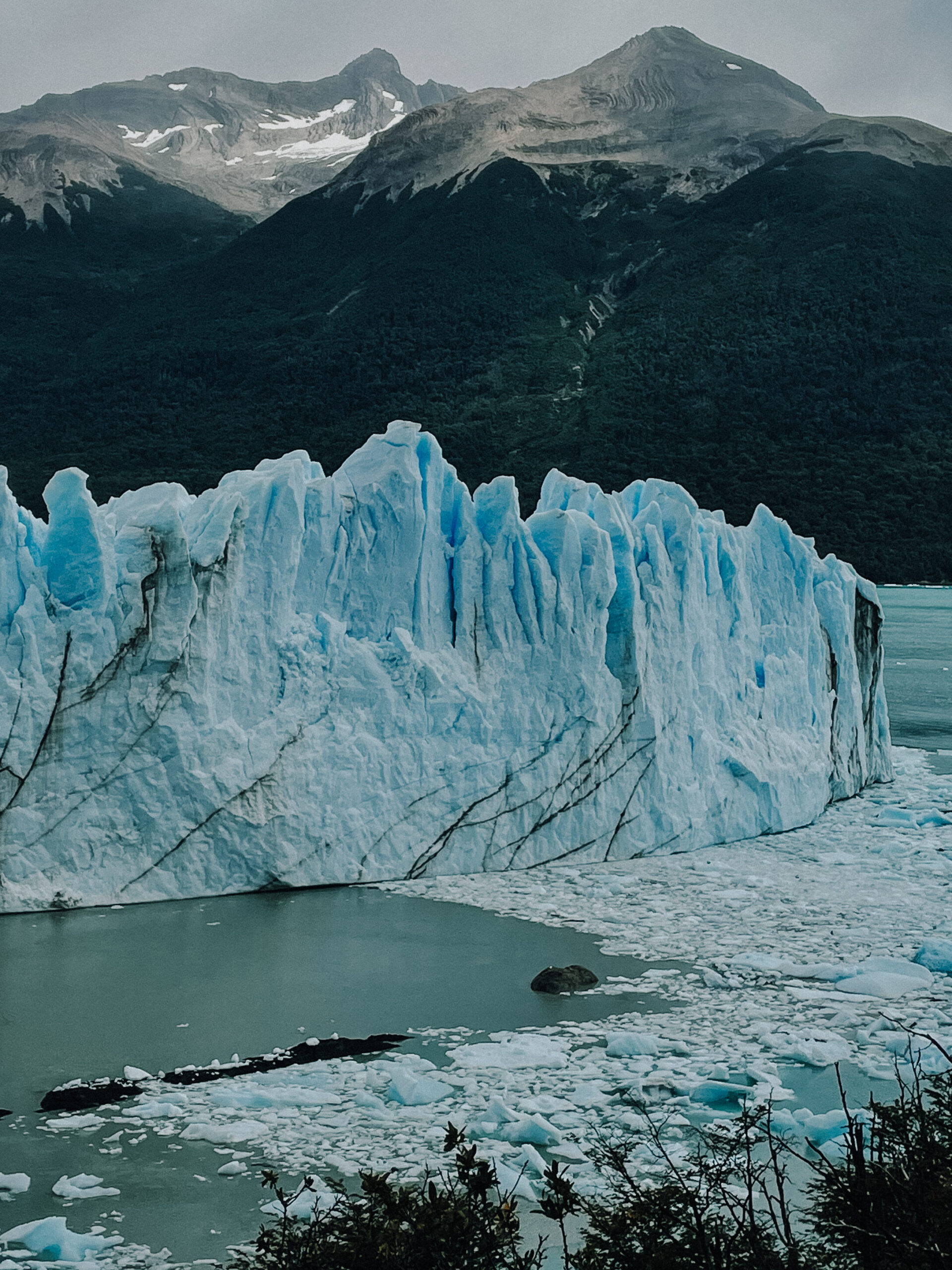
4. The World is Smaller Than it Feels
Later that night, I spent more time with Rose and the others from the taxi ride. To continue the concept of anti-budgeting, I had some overpriced wine and learned more about her life. As we shared with each other, the most extraordinary coincidence happened.
When we first met, I had thought she looked similar to a girl I went to college with named Rebekah. Upon sharing Instagram handles with Rose, she noticed we had a shared follower. When she told me it was Rebekah (the same one I’d already thought of that day) I almost didn’t believe her.
She explained they went to a special camp together years ago. Not only had I thought about their physical resemblance earlier, but the fact she knew Rebekah blew me away.
The coincidence seemed like a sign that I was meant to take this trip, while also serving as a reminder of how small the world can be.
5. Sometimes the Best Experiences in Life are Unplanned
Just when we were about to return to the luxurious hostel beds, we realized there were hundreds of people gathering around what looked like a stadium. Apparently, there was a cumbia festival taking place, and the entire small population of Calafate must have been there.
In a place that felt so remote, it was amazing how many people had gathered for this event. Despite being exhausted, this felt like an experience we needed to have.
The venue was entirely free to enter and there was no alcohol being served. Instead, a small group of older ladies stood behind a grill, cooking “choripans” while simultaneously dancing to the music. One woman held her baby as she worked, somehow moving to the cumbia sounds as well.
This sight was one of my favorite moments throughout the whole trip. Despite the stunning nature around me, there was something so wholesome about the simplicity of their stand. The women were warm and genuine, merely serving Argentinian favorites while dancing through the night.
After tasting my first choripan, which was essentially an elevated hot dog, we ventured into the sea of people. All age groups were present: older couples dancing in each other’s arms, young kids carelessly barging through the crowd, and everyone in between. Of course, the stray dogs made an appearance as well. Apparently, even those with four legs can dance to cumbia.
The lead singer played the Guacharaca, creating the typical cumbia shuffle noise. We danced for a couple hours under the stars, and as I walked home, I experienced yet another moment of disbelief.
I’d spent hours planning my itinerary, booking bus tickets and flights. However, a Calafate cumbia concert? This was something I never could have expected.
I realized the importance of leaving some space for the unknown. Sometimes, following this rule is done through literally following the sound of music.
It is safe to say when I got home, I immediately passed out. The next morning, I had to pack my bag again and prepare for another long travel day.
6. Transportation Can be an Experience if You Pay Attention
It’s a good thing the buses from Calafate to El Chalten are comfortable because it is a long 3.5-hour drive. At first, I did what any modern person would do on a long ride, attempting to distract myself with “things.”
I tried to read, but I got a headache. I tried to write, but the bus was too bumpy. Instead, I was left with merely listening to music and looking out the window.
Soon, I realized this was entertaining in and of itself. As we gradually approached El Chalten, the landscape changed. At one point, we passed fields of guanacos, the llama species native to South America. Because I think they’re adorable, enjoy this photo of guanacos I have borrowed from Unsplash:
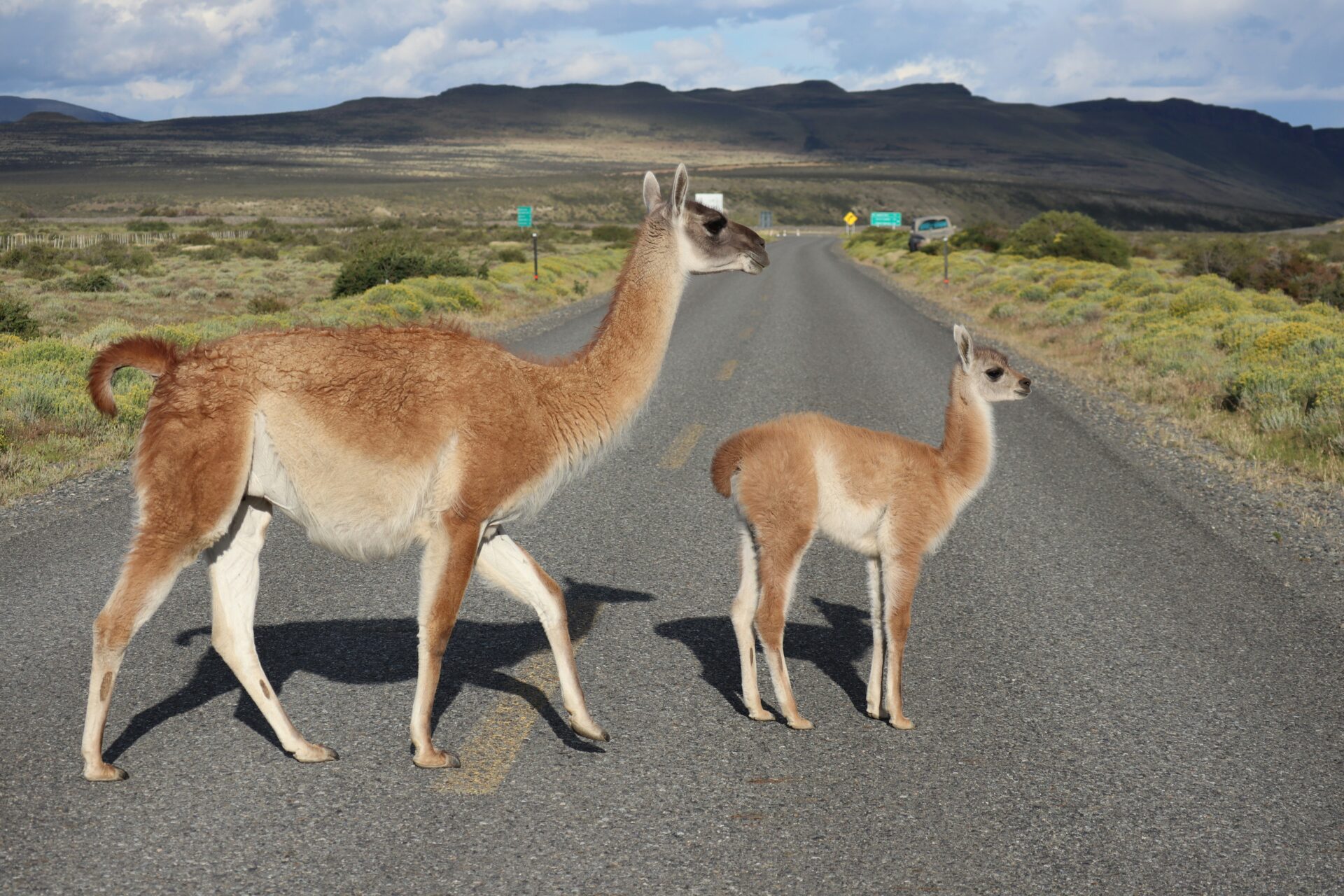
However, Rose had warned me about the dark side of these fields, which I eventually saw for myself. Occasionally, these brave llamas attempt to jump the wire fence between the field and the main road. However, the unsuccessful llamas get stuck and well . . . let’s just say the fence doubles as a guanaco graveyard.
Once we were even closer to approaching El Chalten, the infamous Mt. Fitz Roy became visible in the distance. Even from afar, one can immediately recognize the points that make up the iconic Patagonia logo. The mountain’s jagged peaks reach up into the air, the gray granite contrasting with the bright snow on the tips.
Excitement noticeably grew in the bus, as those who slept the entire way bounced up to capture photos.
For once, I was glad I had nothing to do on the ride. Without the distractions captivating my attention, I was able to watch the scenic landscape transform before me.

7. Never, Ever, Travel Without Cash in Patagonia
Within the initial hour of arriving in El Chalten, I learned the most important lesson of all: never travel to Patagonia without cash. As I happily sat at a cafe, munching on another overpriced meal, I nonchalantly checked my hostel app. I originally intended to merely find directions, though my heart sank when I saw a sentence that I’d missed previously: payment by cash only.
In The States, all hotels permit card payments. However, as I looked around at the remote mountains around me, I realized this was a rookie mistake.
In my defense, I’d been intentionally using the rest of my Argentinian pesos, as my boyfriend and I were leaving for Peru as soon as I returned. I also thought I’d paid for the hostel already, not noticing I’d actually only made a deposit.
Inside this quaint cafe, I began having a panic attack. Even this flat white and delicious Mediterranean toast wasn’t going to help.
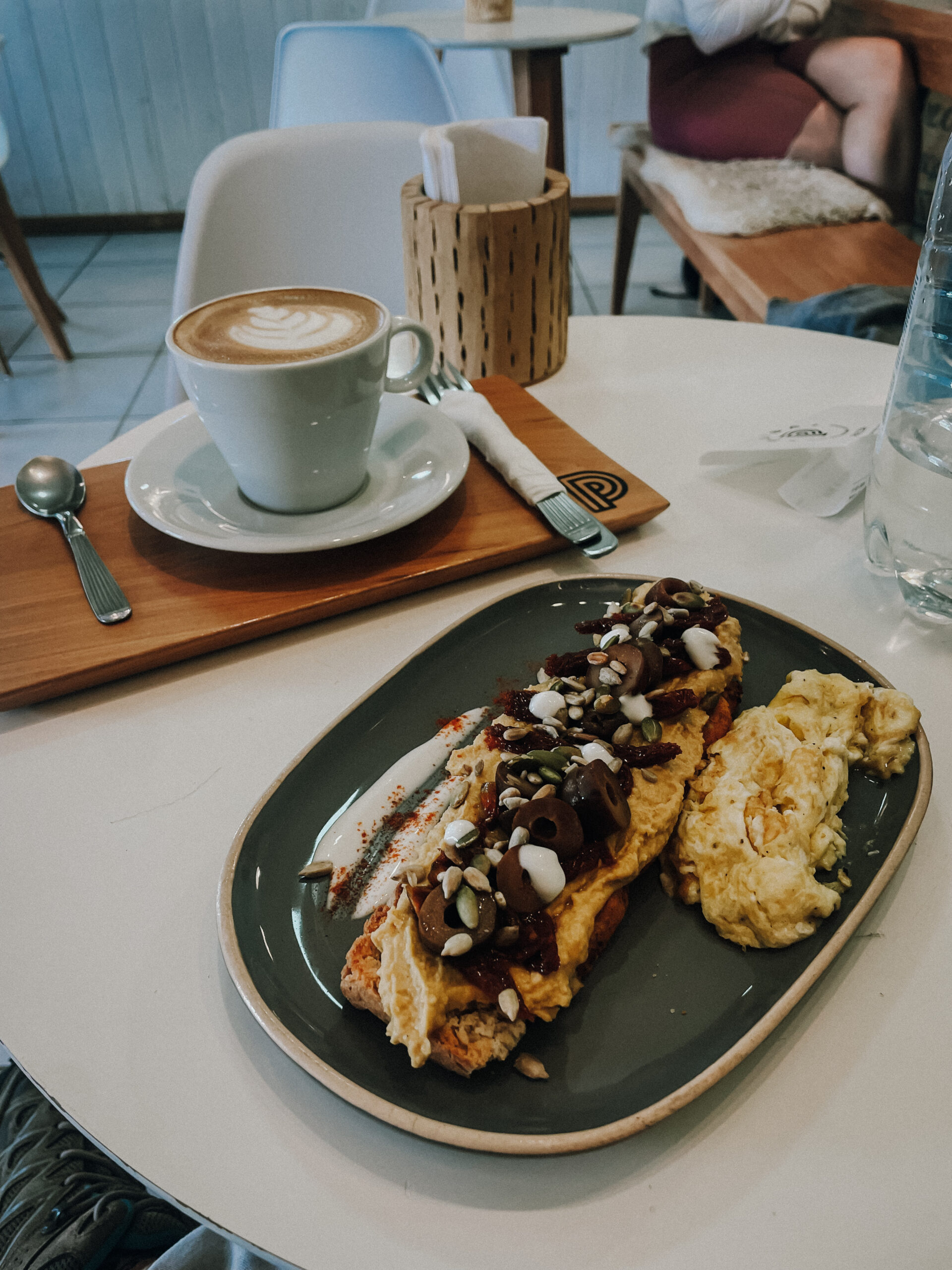
Despite my heart rate levels, I knew I had no choice but to simply figure it out. The only comforting sound around me was a middle-aged couple speaking in English. It sounded like they were from the UK, but any familiar words were music to my ears.
Fueled by my amygdala’s fight or flight response, I interrupted their conversation to ask for help. They were both comforting, explaining to me that I could try to transfer money to a Western Union bank.
I’d heard of others using this back in Buenos Aires, but this was going to be my first attempt. They did warn me that sometimes Western Unions don’t actually have the cash present to give you. In somewhere like El Chalten, my chances seemed slim, but I was desperate. The woman kindly gave me her number so I could contact them if I had problems, and I headed to find the only Western Union in El Chalten.
As I approached where Google Maps declared Western Union was located, I reached a series of small businesses. Of course, none of them were Western Union. In typical middle-of-nowhere fashion, the directions I was given was something like, “Travel four blocks that way.”
In a completely foreign place, these instructions might as well have been to go “over the river and through the woods to grandmother’s house.”
Finally, I recognized the bright yellow Western Union sign, and prayed my struggles were close to over. They were not.
8. It’s Okay to Ask Strangers for Help
Just as I’d been warned, Western Union did not have any cash. I tried to remain calm when the woman responded, “Maybe tomorrow!” I had no choice but to run back to the cafe, leave my ego at Western Union, and ask the couple for money.
As I stumbled back into the cafe, I was relieved to see they were still inside (though they were clearly packing up to leave). I told them what happened, and they immediately offered to give me some of their cash. They graciously waited for me to download PayPal, go through the 20 rounds of authentication, and send them money through my phone. I thanked them about one hundred times before venturing out to find the hostel.
Ironically, I saw them on the street the following day, where I was able to thank them for the hundred and first time.
As I walked to the hostel, I felt immensely grateful for the couple’s help. As someone who struggles asking friends and family for help, this was a tough situation for me. The first lesson, which should have been clear, was to obviously bring more than enough cash when traveling somewhere like Patagonia.
However, the lesson that stuck with me even after my adrenaline subsided was that it’s okay to ask for help. Sometimes, you have no choice.
The third lesson was that I should probably not make fun of British people anymore, because it was their funny English accent that comforted me mid-heart attack.
I spent the rest of the day relaxing and planning the following morning.
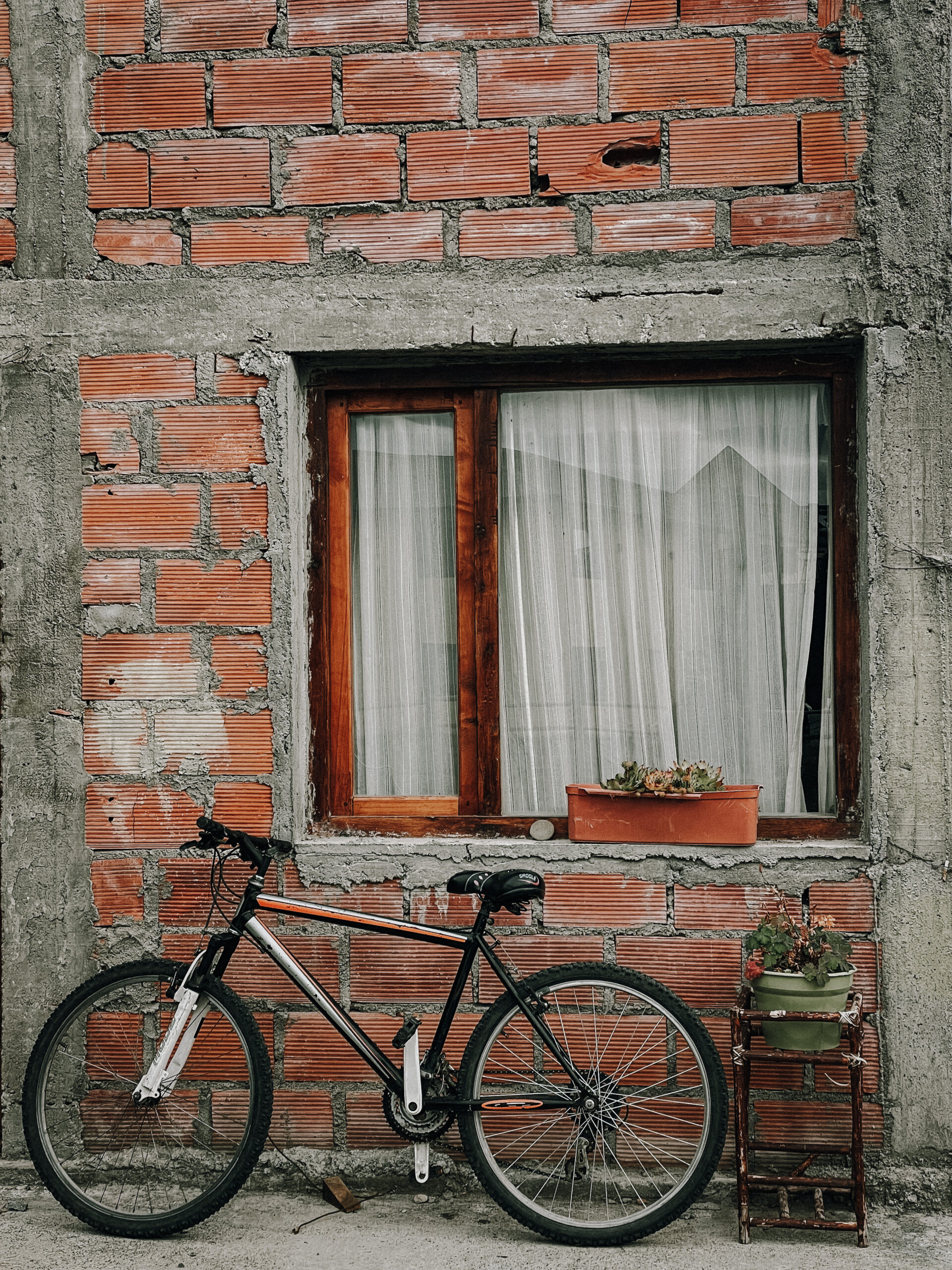
9. It’s Okay to Know Your Limits . . .
Almost every person in El Chalten is there to hike. There are various famous treks, though I’d never been on a big hike by myself. With my boyfriend back in Buenos Aires, I was hesitant about attempting a major trail all alone. Usually, he’s the navigator, planner, pace keeper . . .
Surrounded by the fearless travelers at the hostel, this felt discouraging at first. I wanted to be the girl who climbed major mountains by herself, but being alone in Patagonia didn’t feel like the best time to do so.
Also, after the panic attack of the prior day, I wanted to have some mindless fun.
Therefore, I booked a horseback riding tour. This way, I could still explore the mountains while letting someone with four legs do all the work.
After a short bus trip to the ranch, myself and about eight others were loaded onto horses. My horse was the tallest of the group, and I had to use all my leg strength to hoist myself onto his back. I rode horses many times as a kid, though it’d been a while since the last time.
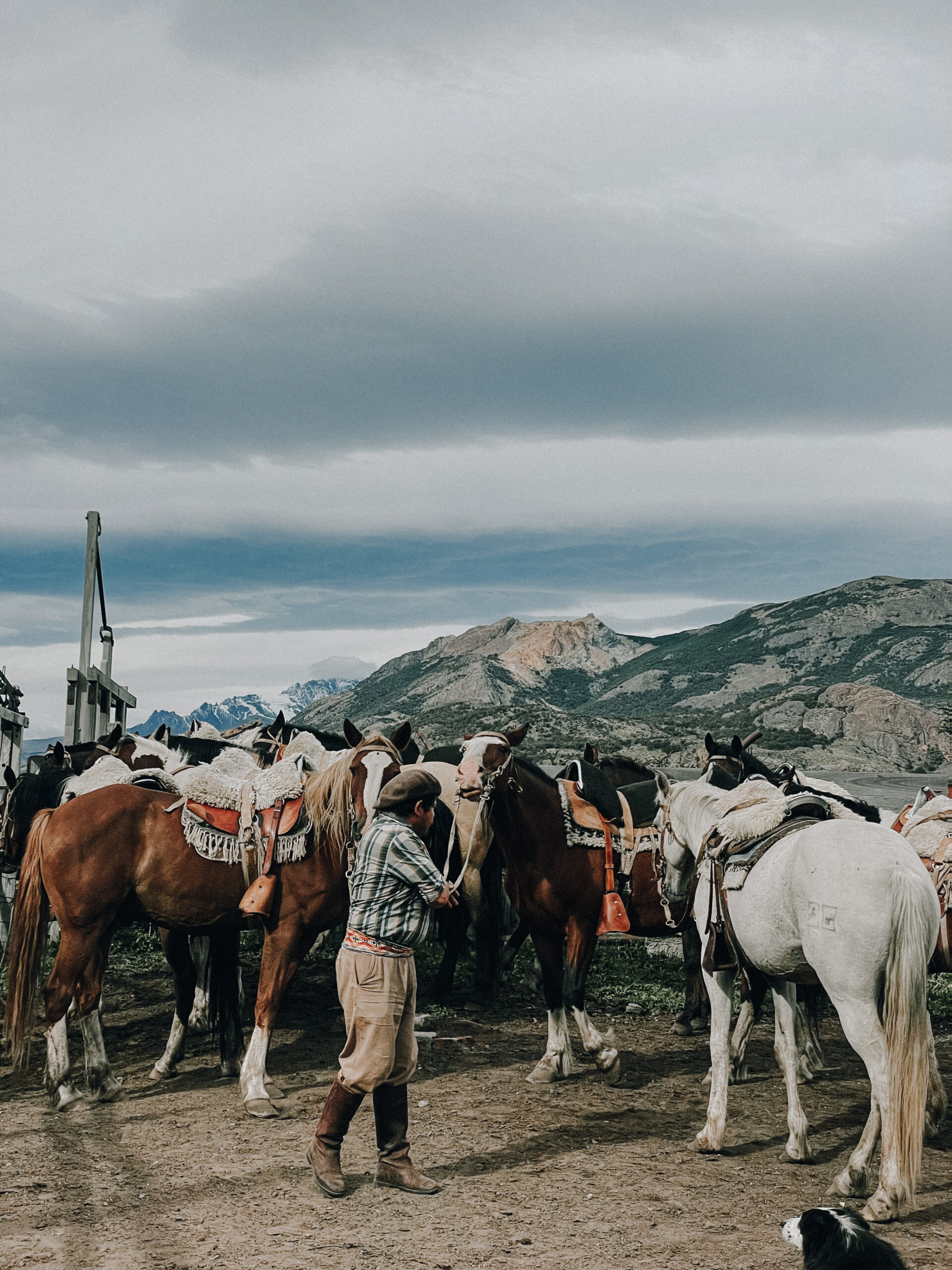

Additionally, I was used to the English style of riding, using two hands for both balance and direction. As we were in the middle of the mountains, of course these locals rode Western, guiding with one hand and holding onto the horn with the other. This altered means of balancing took some time to get used to, though eventually I felt comfortable on a horse again.
Once this switch clicked in my brain, I felt invigorated.
We gradually moved up the mountain, leaning forward for balance on the steep inclines. My horse was a bit of a lazy boy, and we often had to accelerate to a trot to keep up. When he was running, I truly felt like I was in a Western movie. I sat back in the saddle, holding one arm up for control, basking in the beauty of the surrounding views.
At the top of the mountain, we jumped off our horses and walked along a short trail to a viewpoint. Below the cliffs sat a lagoon, which was so blue it looked opaque. Condors soared above us, their massive wingspans propelling them through the crisp air. It was a beautiful sight.
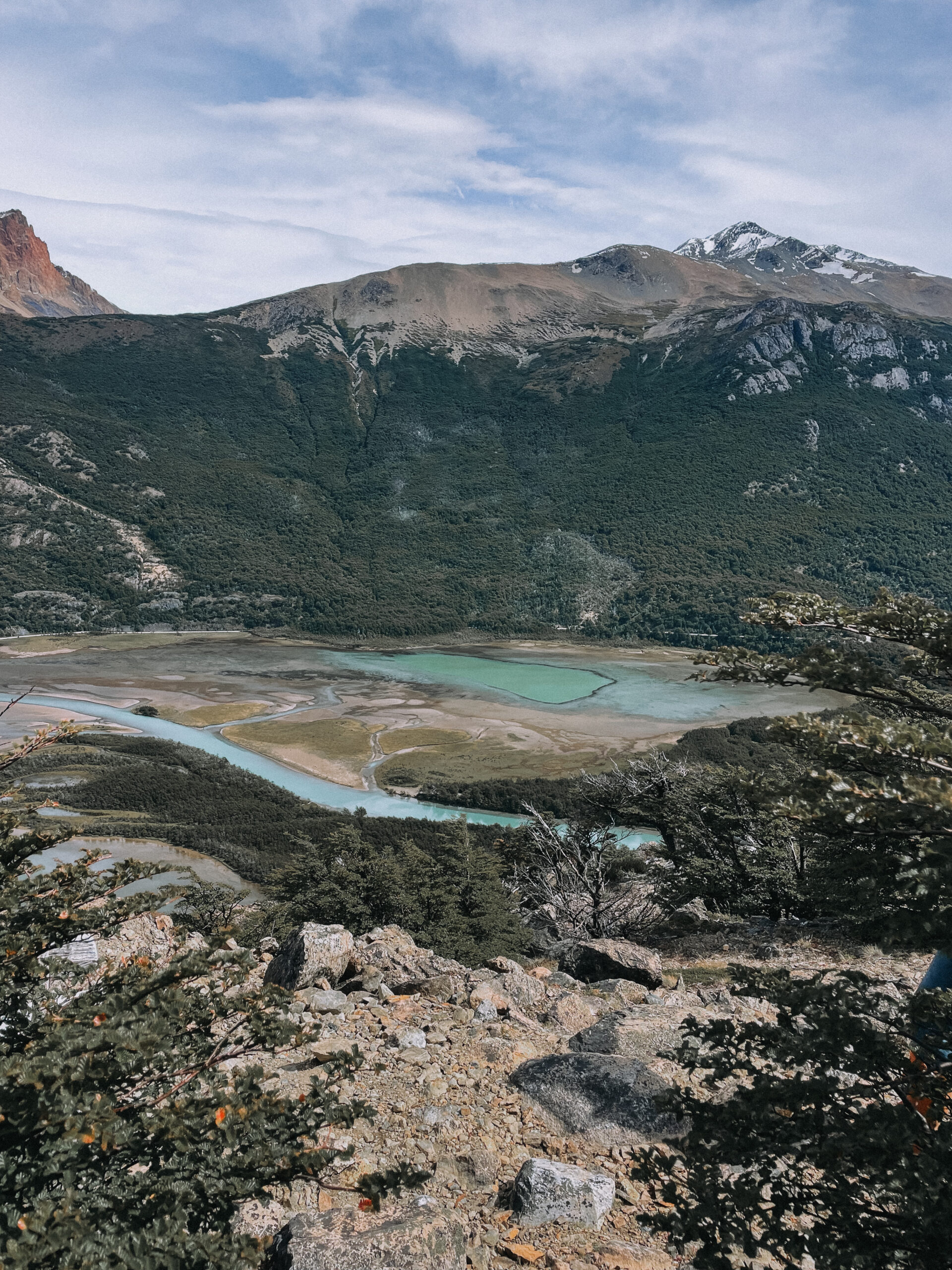
On the descent back towards the horses, our guide pointed out various edible wild berries. As I tried the various species, I felt like a true hunter gatherer.
When we reached flat ground, a delicious smell filled the air. The other local guide had prepared a chicken and vegetable stew, which was bubbling over a fire. They encouraged us to have as much as we wanted, along with rolls of bread and red wine. The stew was delicious, and I was amazed he’d effortlessly put such a flavorful dish together in that short time.
They also prepared Mate for us to share, passing it around in typical Argentinean fashion.
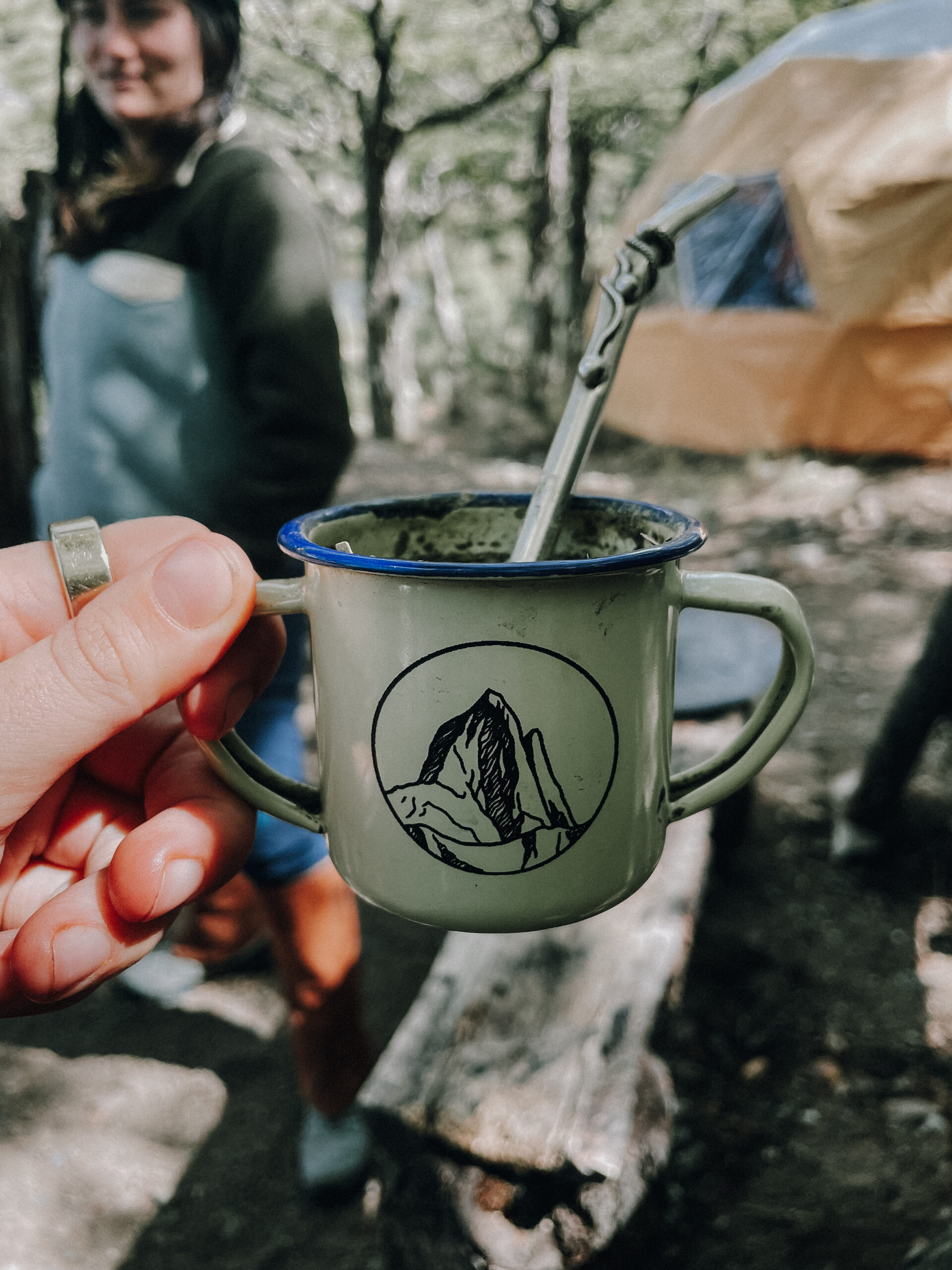
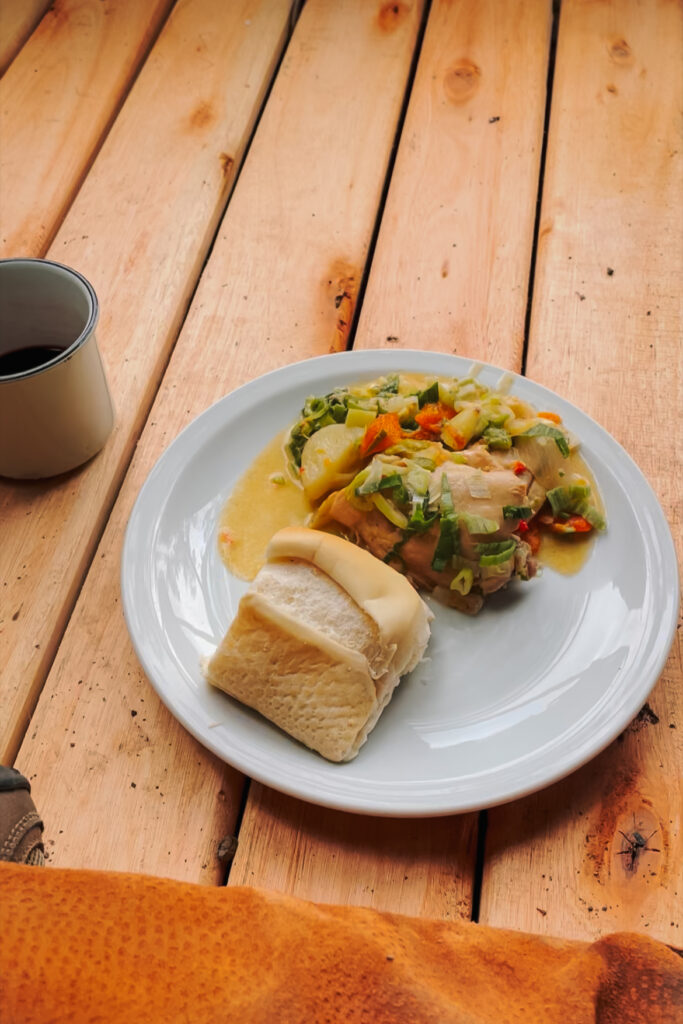
As I scarfed the meal down in a not-so-lady-like fashion, I felt immense gratitude for being where I was. Despite the struggles of the prior day, I’d managed to find myself drinking wine in the middle of the Patagonian woods.
Though I felt slightly embarrassed about not hiking previously, I reminded myself it was okay to know my own limits. The horseback riding experience was just as amazing, and the meal I ate was definitely more delicious than the trail mix I would have settled with.
By the end of the tour, my legs (and glutes) were incredibly sore. I spent the remainder of the night drinking tea in the hostel, listening to the foreigners discuss their opinions on the state of America.
10. . . . But Push Yourself!
Because I felt like I still needed to attempt a solo hike while in Patagonia, I pushed myself to wake up before sunrise to go. Through research on AllTrails, I found the Laguna Capri route, which was short enough to finish before I needed to catch a bus back to Calafate. I’d prepared my bag the night before, charging my portable charger and packing dried apricots. Like a pro, I also downloaded the map of the route.
In the dark, I set out to find the trailhead, guided only by the light of my headlamp. The first hour was filled with both anxiety and excitement, as this was my first solo hike in the dark. I nervously checked the map constantly, until the sun began to rise and eased my emotions.
As the rays casted orange hues on the valley below, I decided to stop stressing and merely enjoy the remarkable scenery.

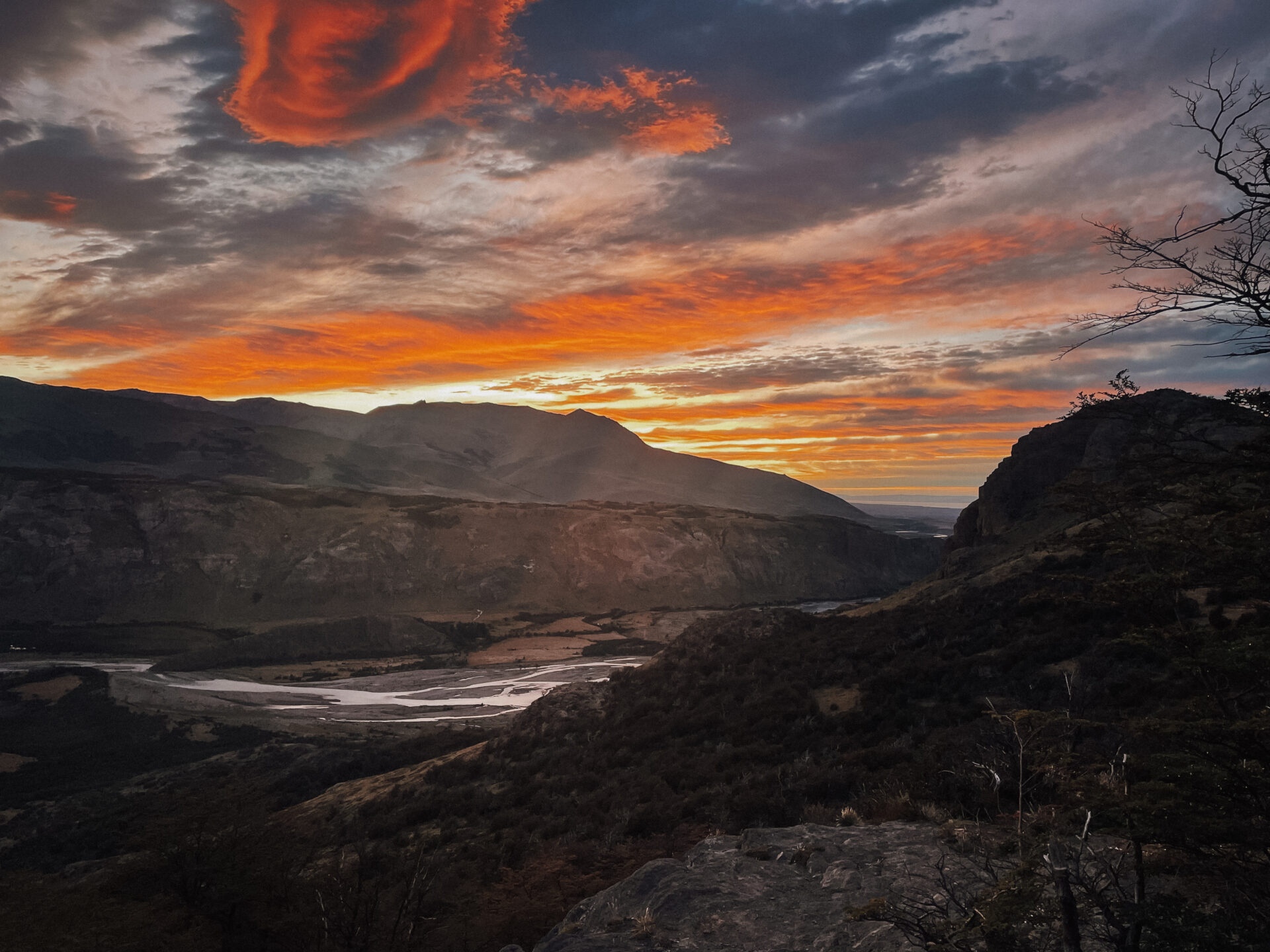
I passed through wooded areas and navigated over tree roots. Fortunately, the trail itself was not technical, though it was not marked that well. With the help of the map, I was able to successfully make it to the lagoon.
Here, I was rewarded with a stunning view of Mt. Fitz Roy. The ice caps glimmered in the sun and small waves softly rolled in the water below. This viewpoint felt like a reminder that I should continue to push myself, always finding new activities that force me out of my comfort zone.


On the way back, I was stopped in the middle of the trail by a red fox. Despite being a wild animal, he appeared so friendly, jumping around the tall grass like a bunny. I made eye contact with a couple on the other side of the trail, who whispered to me that he’d been following them the whole way. They said sometimes they lost sight of him, until again he would show up, as if they were playing a game together.
The sight of wildlife so close was the cherry on top to the beautiful morning.
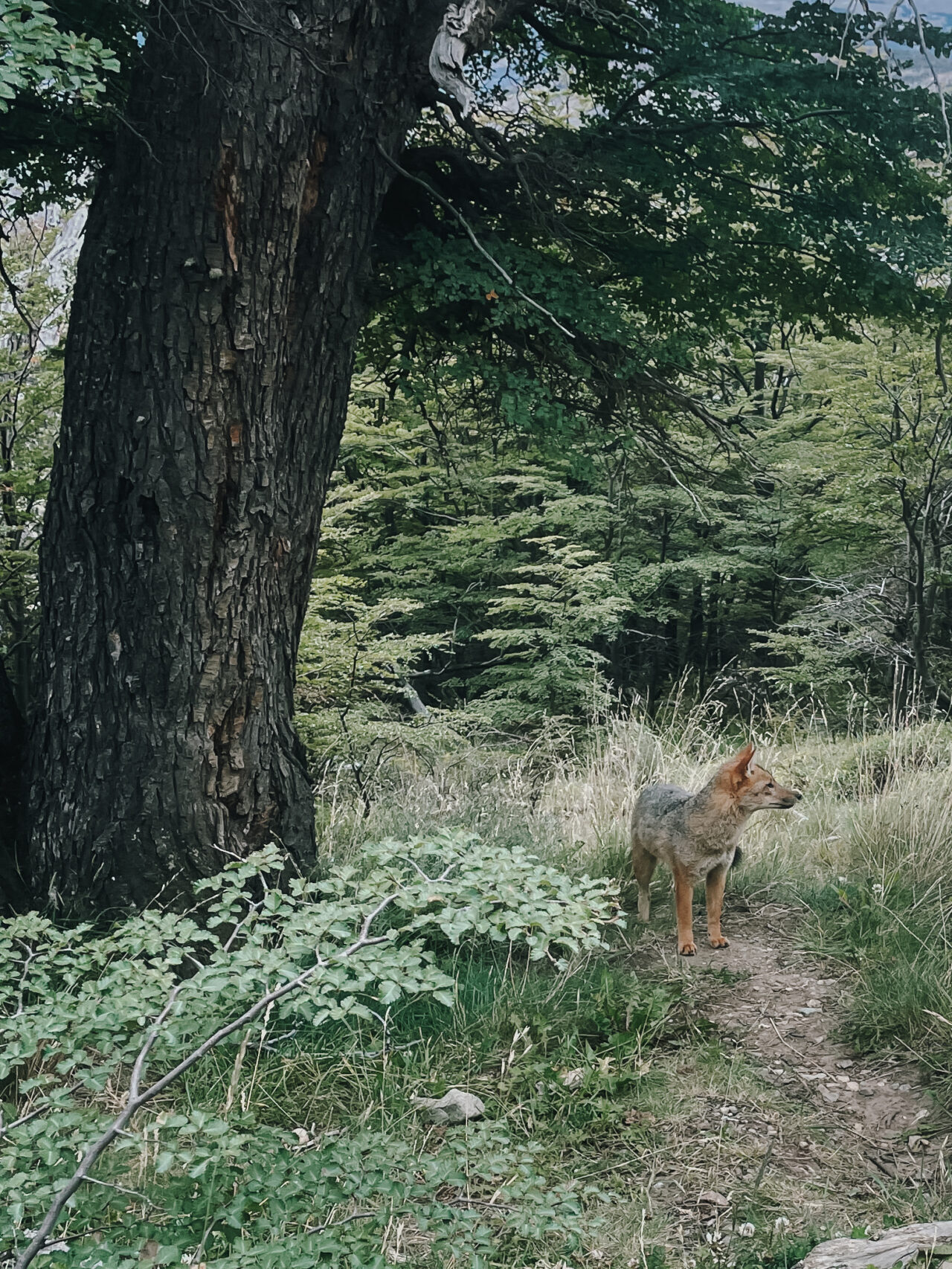
Again, I felt gratitude for the experience, and proud of myself for venturing out alone.
11. Everyone Should Book a Solo Trip to Patagonia
The remainder of the final day was filled with exhaustive travel. I took a bus back to Calafate Airport and then flew to Buenos Aires. On the plane ride home, I reflected on this solo journey.
I thought about the differences between traveling with someone else and by yourself. I recognized the benefits of having someone to share the experiences with. On the other hand, the freedom of making all the decisions on a trip was foreign to me. As someone who often caters to others, it was liberating to know I could plan an itinerary myself.
Though I could have done without the risk of being homeless in El Chalten, the experience was an important one.
I learned that even in difficult situations, everything will be okay.
These final reflections made Patagonia an extremely memorable trip. The remote nature of Patagonia creates an ideal environment for solo travel. As opposed to a place filled with activities that would be better done with company, Patagonia feels like it’s meant to be experienced alone.
The silence allows space to think. The nature provides important reminders.
Patagonia is the ultimate place to be alone, building confidence in one’s abilities in a place where you cannot rely on others.
